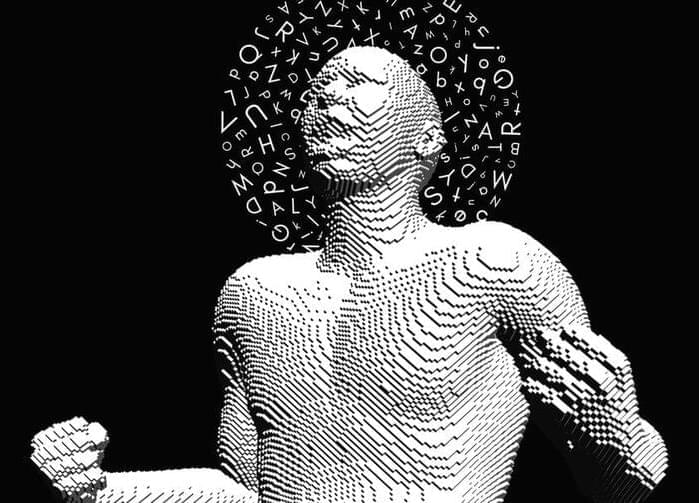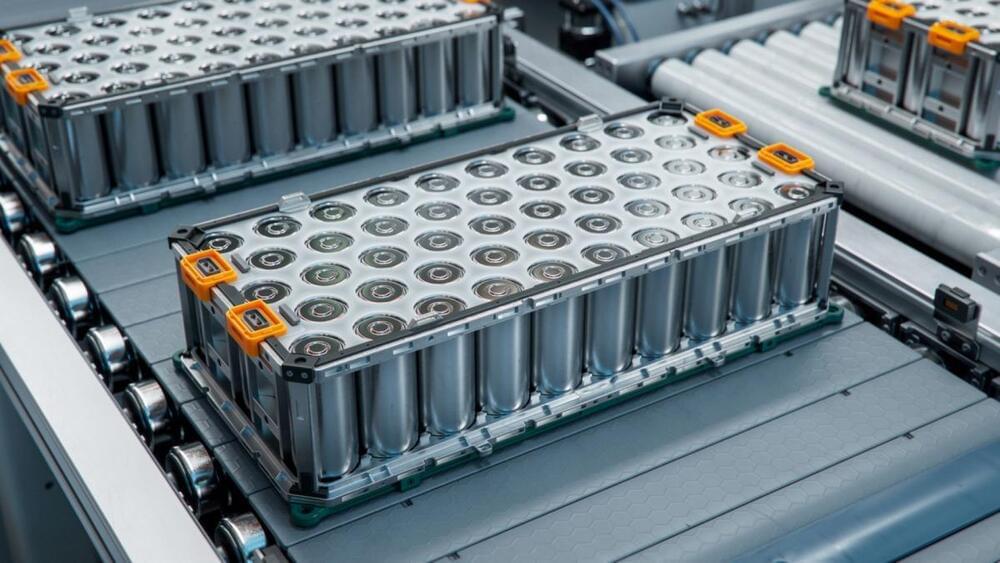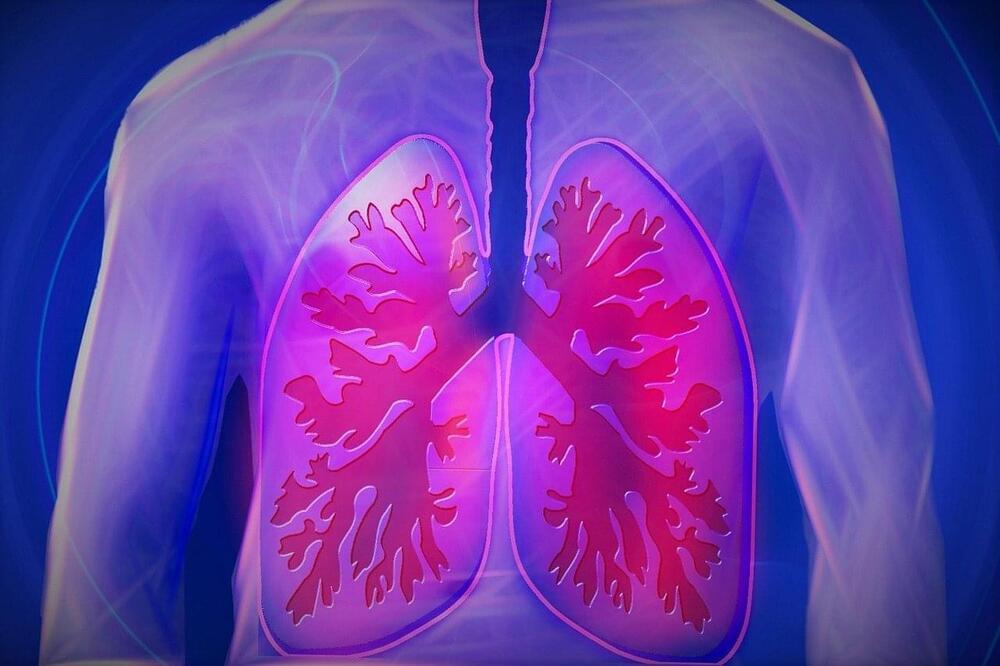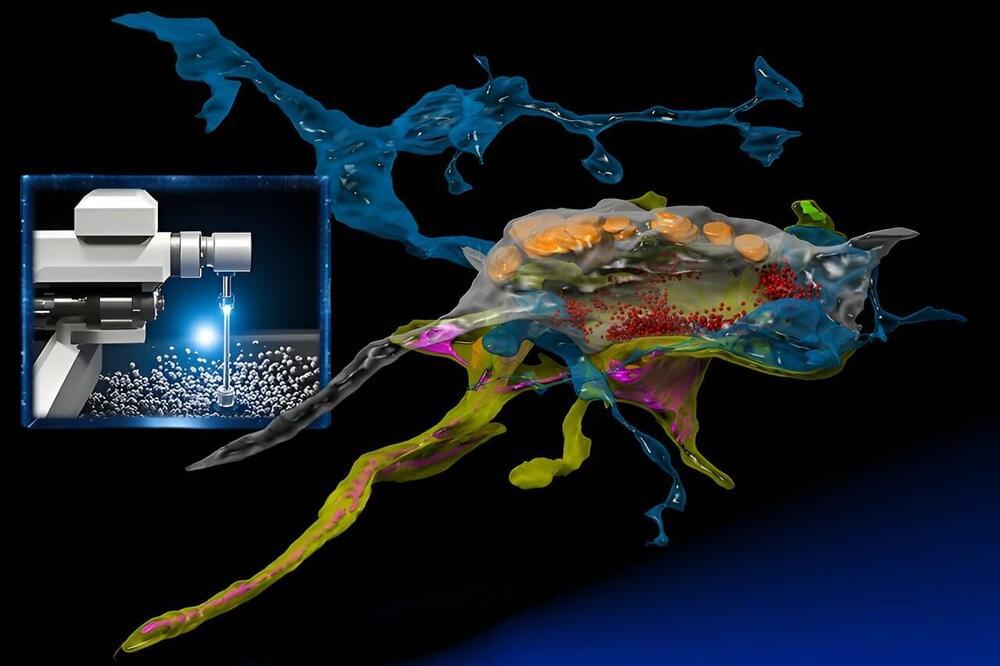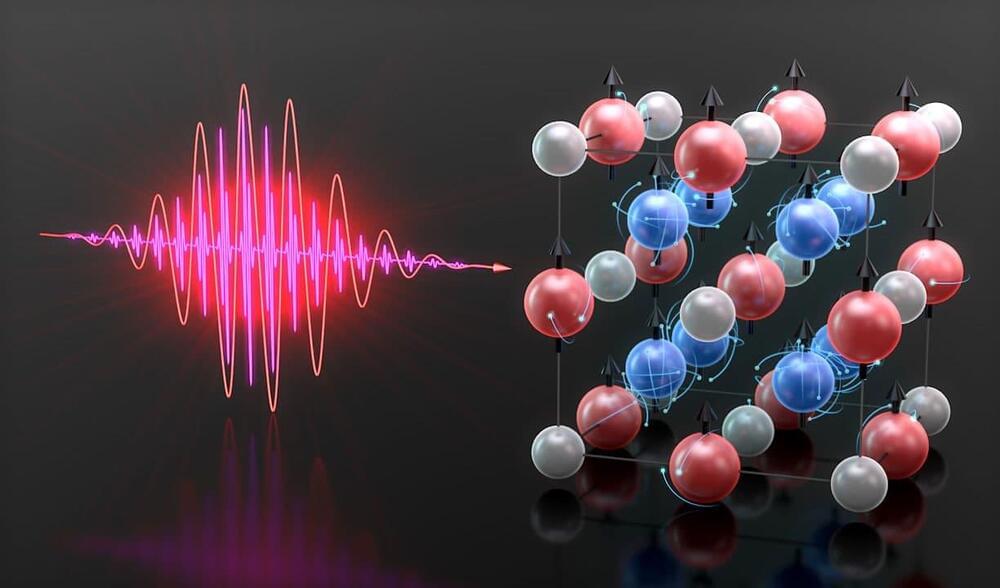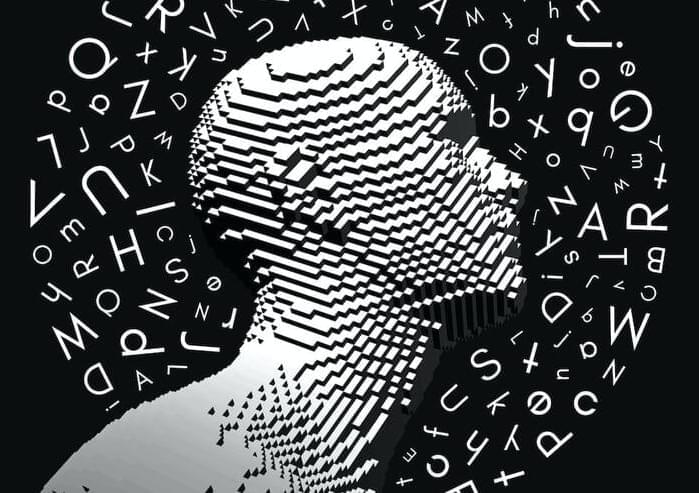Page 1091
Nov 12, 2023
Scientists shed new light on critical issue facing battery components in EVs: ‘The whole field has been misled’
Posted by Paul Battista in category: finance
“We found that the electrolyte reacting with the cathode surface leads to the increased crack formation,” Manthiram said in the lab report.
The UT team reports that reversible cracking happens during battery operation. But, the electrolyte is working its way into those openings, removing oxygen from the cathode, and solidifying the cracks, per the UT report.
To help visualize the problem, the experts likened this process to a river eroding its banks. And, in their opinion, the electrolyte’s impact on the cathode’s surface is the main cause for the degradation.
Nov 12, 2023
BCM, Duke University to study surgery treatment for mesothelioma
Posted by Shubham Ghosh Roy in category: biotech/medical
Mesothelioma is a highly fatal disease with a survival rate of under 10% at five years. New advances with immunotherapy have improved survival, but only 23% of patients are alive at three years when treated with immunotherapy alone. Surgery with chemotherapy has resulted in the longest survival. Baylor College of Medicine and Duke University will conduct a clinical trial for patients with mesothelioma to determine whether the combination of chemotherapy and immunotherapy prior to surgery is more effective in treating patients with mesothelioma.
Before surgery, the research team will give participants immunotherapy or chemoimmunotherapy. They plan to enroll 23 people in each arm between Baylor and Duke, and anyone with mesothelioma can participate. They will see participants in clinic to evaluate them prior to enrollment, prior to surgery and in follow-up continually.
“We will determine disease stage and make sure they’re physiologically strong enough for treatment. For patients who have disease that can be removed by surgery, we will randomize them to one of the two arms – either immunotherapy with two drugs, or immunotherapy with two chemotherapy agents. They will receive three cycles of each, then get reevaluated for surgery. They will then continue immunotherapy after surgery for one year,” said Dr. R. Taylor Ripley, associate professor of surgery in the Division of Thoracic Surgery and member of the Dan L Duncan Comprehensive Cancer Center at Baylor.
Nov 12, 2023
Bill Gates: This Is What the World Will Look Like When Everyone Has Their Own Personalized A.I. Assistant
Posted by Zola Balazs Bekasi in category: robotics/AI
Gates paints a detailed picture of what our world will look like when everyone has a personalized A.I. assistant.
Nov 12, 2023
Using AI to optimize for rapid neural imaging
Posted by Shubham Ghosh Roy in categories: biotech/medical, nanotechnology, robotics/AI
Connectomics, the ambitious field of study that seeks to map the intricate network of animal brains, is undergoing a growth spurt. Within the span of a decade, it has journeyed from its nascent stages to a discipline that is poised to (hopefully) unlock the enigmas of cognition and the physical underpinning of neuropathologies such as in Alzheimer’s disease.
At its forefront is the use of powerful electron microscopes, which researchers from the MIT Computer Science and Artificial Intelligence Laboratory (CSAIL) and the Samuel and Lichtman Labs of Harvard University bestowed with the analytical prowess of machine learning. Unlike traditional electron microscopy, the integrated AI serves as a “brain” that learns a specimen while acquiring the images, and intelligently focuses on the relevant pixels at nanoscale resolution similar to how animals inspect their worlds.
“SmartEM” assists connectomics in quickly examining and reconstructing the brain’s complex network of synapses and neurons with nanometer precision. Unlike traditional electron microscopy, its integrated AI opens new doors to understand the brain’s intricate architecture. “SmartEM: machine-learning guided electron microscopy” has been published on the pre-print server bioRxiv.
Nov 12, 2023
How the UAE’s ‘Rain Drones’ Use Electric Shocks to Kickstart Storms
Posted by Shailesh Prasad in category: drones

In a year of smashed global temperature records, the United Arab Emirates (UAE) is turning to technology to turn the tide on the searing heat. As a report by Business Insider points out, in the city of Dubai, which reaches heats of up to 120 degrees F (48 degrees C), scientists are using a special method to make it rain.
Specifically, Dubai is using drones that fly into clouds where they then discharge electricity to kickstart rain, which reduces temperatures and provides much-needed water resources.
Nov 12, 2023
High-harmonic probes to unravel the secrets of spin
Posted by Shailesh Prasad in categories: nanotechnology, particle physics
More sophisticated manipulation of complicated materials and their spin states at short time scales will be needed to create the next generation of spintronic devices. But, a thorough understanding of the fundamental physics underpinning nanoscale spin manipulation is necessary to fully utilize these powers for more energy-efficient nanotechnologies.
The JILA team and colleagues from institutions in Sweden, Greece, and Germany investigated the spin dynamics within a unique substance known as a Heusler compound—a combination of metals that exhibits properties similar to those of a single magnetic material. In their investigation, the scientists used a cobalt, manganese, and gallium combination that acted as an insulator for electrons with downwardly oriented spins and a conductor for those with upwardly aligned spins.
Scientists used extreme ultraviolet high-harmonic generation (EUV HHG) light as a probe to track the re-orientations of the spins inside the compound after exciting it with a femtosecond laser. Tuning the color of the EUV HHG probe light is the key to accurately interpreting the spin re-orientations.
Nov 12, 2023
Your mental dictionary is part of what makes you unique − here’s how your brain stores and retrieves words
Posted by Arthur Brown in category: neuroscience
Most people can draw from tens of thousands of words in their memory within milliseconds. Studying this process can improve language disorder treatment and appreciation of the gift of communication.
Nov 12, 2023
Move Over, CRISPR: Algae and Snails Are Hiding Gene Editing Superpowers
Posted by Paul Battista in categories: bioengineering, biotech/medical
New research finds RNA
Ribonucleic acid (RNA) is a polymeric molecule similar to DNA that is essential in various biological roles in coding, decoding, regulation and expression of genes. Both are nucleic acids, but unlike DNA, RNA is single-stranded. An RNA strand has a backbone made of alternating sugar (ribose) and phosphate groups. Attached to each sugar is one of four bases—adenine (A), uracil (U), cytosine ©, or guanine (G). Different types of RNA exist in the cell: messenger RNA (mRNA), ribosomal RNA (rRNA), and transfer RNA (tRNA).
Nov 12, 2023
New Synthetic Superatomic Material is “World’s Best Semiconductor”
Posted by Paul Battista in categories: materials, physics
Researchers at Columbia University have created a superatomic material that’s being lauded as the “world’s best semiconductor.” Through a surprising twist of physics, it’s expected to allow processing (switching) speeds in the femtosecond scale. Here’s why it will most likely be a piece of the semiconductors puzzle, not its final shape.
